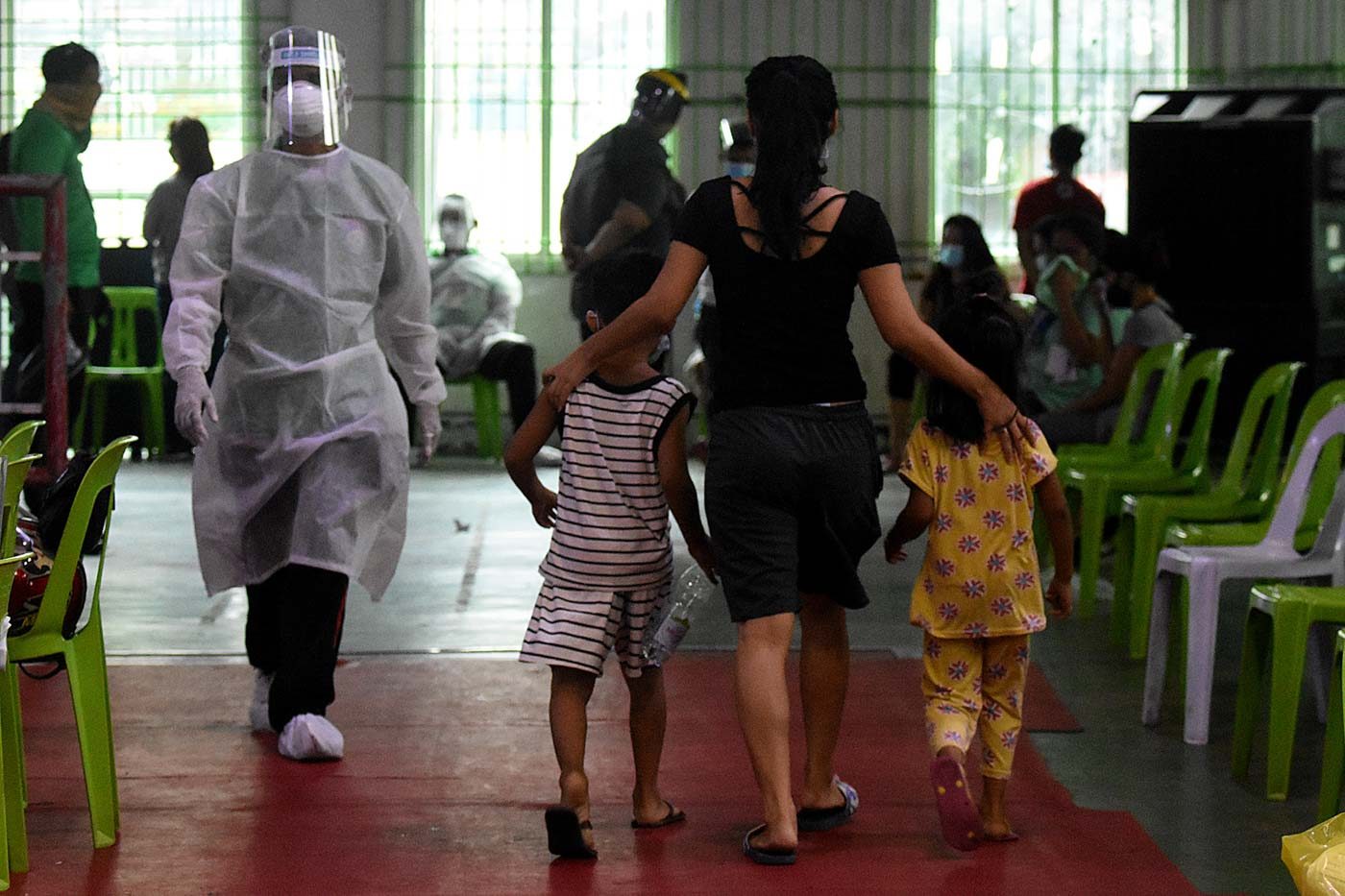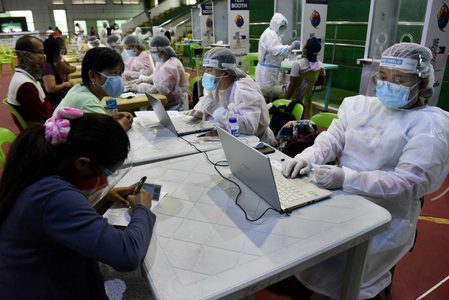SUMMARY
This is AI generated summarization, which may have errors. For context, always refer to the full article.

Researchers studying the coronavirus pandemic in the Philippines estimated that the number of coronavirus cases may reach up to 330,000 by the end of September, lower than their previous projection of some 375,000 cases by the end of the month.
In its latest report on Tuesday, September 8, the Octa Research Group said confirmed cases nationwide may fall between 310,000 and 330,000 by September 30 as newly reported cases were on a downward trend for the last 3 weeks.
Based on testing, the group observed the average number of daily cases in the country declined from 4,174 from August 15 to 21, to 3,852 from August 22 to 28, and 3,464 from August 29 to September 4.
The same was true for the Philippines’ reproduction number, which is used to measure the number of people one confirmed case can infect. From a reproduction number of 1.08 from August 15 to 21, the figure decreased to 1.01 from August 22 to 28, and then to 0.92 from August 29 to September 4.
Experts have repeatedly urged areas to bring their reproduction numbers to lower than 1 for the pandemic to reach manageable levels.
Metro Manila gets some relief
These new findings come as University of the Philippines mathematics professor Guido David said trends showed the coronavirus curve has started to flatten in Metro Manila.
The development is significant as the capital region has been the epicenter of the Philippines’ outbreak from the beginning, with 55% of the nationwide caseload found in the metropolis.
The group reiterated these findings in their Tuesday report, saying that daily new cases based on testing had been going down for the last 3 weeks.
In particular, daily new cases in Metro Manila averaged at 3,195 from August 15 to 21, at 2,867 from August 22 to 28, and at 2,554 from August 29 to September 4.
The same was true for Metro Manila’s reproduction number which was at 0.94 from August 29 to September 4. Before that, the figure was at 1.08 from August 15 to 21 and declined to 0.99 from August 22 to 28.
Meanwhile, the capital region’s positivity rate or the share of tests that come back positive was at 12%. This is lower than the 15% seen in mid-August and the 17% seen in late July when cases were rapidly increasing.
While the lower positivity rate showed fewer people were testing positive for COVID-19, experts pointed out this rate must be brought to 5% for the pandemic to be under control.
Hospitals have started to see some relief too, as the critical care utilization rate was at 63.5% as of September 6, after weeks of remaining in the danger zone level of 70% and above set by the health department.
The Octa researchers also stressed that the curve is starting to flatten only in Metro Manila and not in the entire Philippines yet, as there are still hot spots in the country where cases are on the rise. These include Bacolod City and Iligan City, which were recently placed under modified enhanced community quarantine.
No letting up yet
While the group’s findings are a welcome development, researchers urged the government and the public to remain vigilant.
“It is important that we do not relax and become complacent. The trends can be reversed anytime,” they said.
The group noted that these downward trends that contribute to the “flattening of the curve” must also be sustained for at least 2 to 3 months “before we see a decline in new cases to very manageable levels.”
Health experts earlier said people must continue to wear masks and face shields, practice physical distancing, and wash their hands frequently to avoid getting infected. The government, meanwhile, should scale up testing, tracing, and treatment efforts to curb the pandemic. – Rappler.com
Add a comment
How does this make you feel?

There are no comments yet. Add your comment to start the conversation.